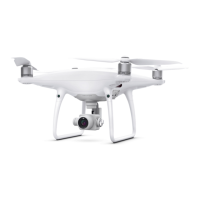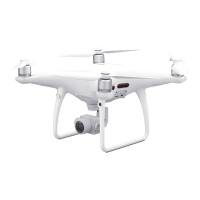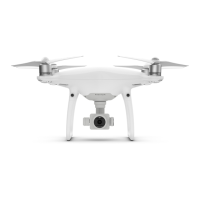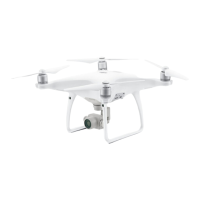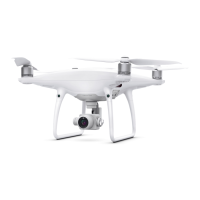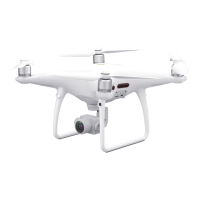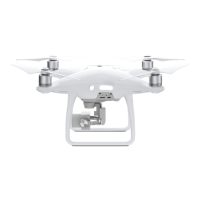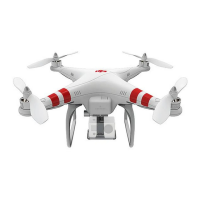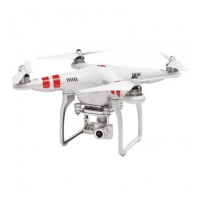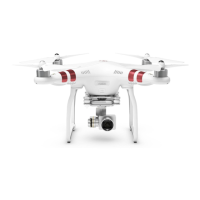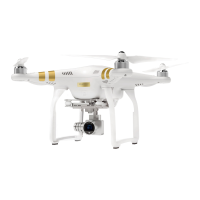2
©
2018 DJI All Rights Reserved.
Safety At a Glance
1. Environmental Consideration
•
Always y at locations that are
clear of building and other obstacles
.
• DO NOT y above or near large crowds
.
•
Avoid ying at altitudes above
400 feet (120 m).*
•
Be very careful when ying
19,685 feet (6,000 m)
or more above
sea level.
•
Fly in moderate weather conditions with temperatures between
32°
to 104° F (0° to 40° C)
.
•
Please take additional caution while ying indoors because the
aircraft stabilization features may be interfered.
•
DO NOT y when the wind speeds exceeding 10 m/s or 22 mph.
2. Pre-ight Checklist
•
Ensure the remote controller and aircraft batteries are
fully charged
.
•
Ensure the propellers are in
good condition
and
securely tightened
before each ight.
•
Ensure the aircraft shells are in excellent condition.
•
Ensure there is
nothing obstructing the motors
.
•
Only calibrate the compass when the DJI GS RTK app or the status indicator prompt you to do so.
•
Check that the camera lens is
clean
and
free of stains
.
•
DO NOT temper (cover or otherwise interfere) with onboard sensors.
•
Altering or modifying the aircraft may impact its stability.
3. Operation
• Stay away
from the
rotating propellers and motors
.
•
Maintain
visual line of sight
of your aircraft at all times. .
• DO NOT
use the Combination Stick Command (CSC) or other methods to stop the motors (if enabled in the app)
when the aircraft is airborne unless in an emergency situation.
• DO NOT answer incoming calls during ight.
• DO NOT
y under the inuence of
alcohols
or
drugs
.
•
During the Return to Home procedure, you can adjust the altitude to
avoid obstacles
.
• DO NOT
y closely above
reective surfaces
such as
water
or
snow
, as these terrain may affect the performance
of the Vision System.
•
In the instance of a
Low Battery Warning
, land the aircraft at a
safe location
.
•
After landing, rst stop the
motor
, then turn off the
Intelligent Flight Battery
, and then turn off the
remote controller
.
•
During an automatic ight, be prepared to take control of the aircraft by toggling the Pause Switch.
•
While with advanced technology, the pilot’s sound discretion is required during the ight. Safety and ight
assistance features such as obstacle avoidance and precise landing are designed to assist your operation, not to
replace it.
•
Environmental conditions including lighting and obstacle’s texture may impact the performance of the Vision
System.
•
The aircraft is not able to automatically break and stop at a safe distance from an obstacle if the aircraft speed
exceeds 14 m/s (31.3 mph).
•
The binocular sensor contrary to the ight direction and the infrared modules are disabled in certain situations.
Please refer to the User Manual for more information.
•
Please set the Return to Home ight height higher than surrounding obstacles.
•
The RTH feature does not enable the aircraft to automatically return to a moving Home Point.
4. Maintenance and Upkeep
• DO NOT
use aged, chipped or broken propellers
.
•
Recommended storage temperature:
between 71° and 82° F (22° and 28° C)
.
•
Refer to the
Phantom 4 Series Intelligent Flight Battery Safety Guidelines
for more information about the safe use of
the battery.
The DJI
TM
PHANTOM
TM
4 RTK is
NOT a toy and is NOT suitable
for children under the age of 18.
Note that ‘Safety at a Glance’ only provides
a quick overview of the safety tips. Make
sure you read and understand the remaining
sections of the Phantom 4 RTK Disclaimer
and Safety Guidelines.
* The ying altitude limit varies in different nations. Always y at the altitudes outlined in your local laws and regulations.
